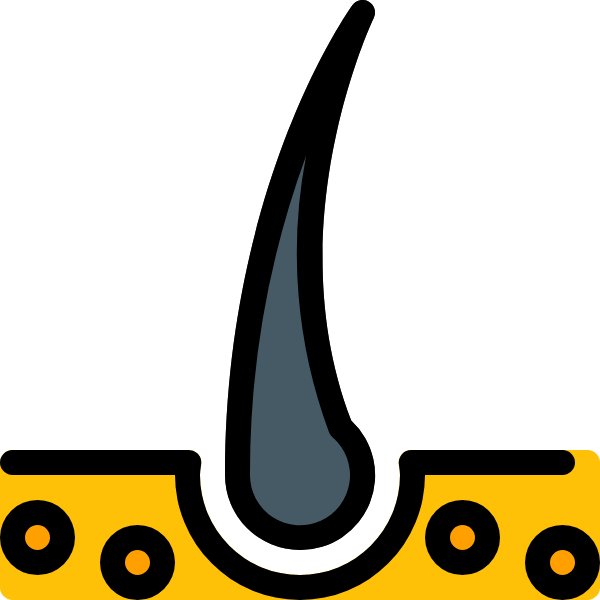Hair loss can be a frustrating and confusing experience. It’s not always easy to understand why it happens or where it comes from. Many people wonder if hair loss is hereditary, meaning that it runs in the family. In this article, we’ll explore what side of the family hair loss typically comes from.
Hair loss affects millions of people across the world – both men and women – yet there remains much confusion about its causes. While genetics plays an important role in determining whether someone will experience hair loss, understanding which family member ‘passes down’ this trait can help us better manage our own expectations when it comes to preserving our locks. We’ll take a look at how you can identify which side of your family is most likely responsible for any potential baldness or thinning issues.
Genetics And Hair Loss
Hair loss is like a thief in the night, silently creeping up on unsuspecting victims and stealing away their crowning glory. Genetics can play an important role in determining who will be affected by hair loss, but it’s not always easy to track down which side of the family may be responsible for passing the trait along. It takes some detective work to figure out whether or not you should be concerned about your future follicles.
Genes are located inside structures called chromosomes that make up our DNA. Our bodies have two sets of 23 chromosomes; one set comes from each parent. Each gene contains instructions for how cells should behave and these instructions direct cell growth and development throughout our lifetimes. When genes don’t function correctly because of changes made to the sequence or structure, it can lead to inherited disorders such as alopecia (hair loss).
If someone in your family suffers from hair loss then there is a good chance they passed this trait onto you through genetics – however this isn’t always guaranteed since multiple factors come into play when looking at hair health and growth cycles. Understanding what causes baldness within families requires deducing which traits were inherited from whom so that you can identify those most likely affected by genetic hair loss patterns. Knowing where to look could help prevent further suffering due to hereditary conditions – all without setting foot in a laboratory!
Identifying The Family Member Responsible
When it comes to hair loss, genetics play a significant role. It’s important to understand that the likelihood of inheriting this trait can come from either side of the family tree. To identify which relative is responsible for passing on the gene, there are several steps you can take:
- Talk to your immediate family members and ask if they or any other close relatives have experienced balding or thinning hair in their lifetime.
- Consider having a conversation with your doctor about testing for genetic markers associated with hair loss.
- Look for patterns within your extended family to see if there may be someone who carries this particular trait.
- Research online resources such as health articles and scientific journals related to hereditary baldness and alopecia.
Keeping an open mind when investigating these potential sources will help you gain more insight into the origin of your own hair loss condition; understanding its roots can better prepare you for managing expectations and taking action moving forward.
Managing Expectations And Taking Action
When it comes to hair loss, it’s often difficult to determine which side of the family is most responsible. Many people assume that genetics are at play—which can be true in some cases—but there are other factors to consider as well. To illustrate this point, let’s look at the case of Susan and her father Jack.
Susan had begun experiencing significant thinning on the top of her head just a few months ago. She was worried about balding, so she asked her dad for advice since he’d been dealing with a receding hairline for years now. But instead of blaming his genes, Jack pointed out that poor nutrition and lack of exercise were more likely culprits behind their shared issues with hair loss. In fact, after making lifestyle changes like switching up his diet and exercising regularly, Jack noticed an improvement in his own scalp health within weeks.
This story shows us how much impact non-genetic factors can have on our hair health — things like stress levels or excessive sun exposure may contribute to thinning or baldness over time if we don’t take care of ourselves properly. Of course, genetics still has a role to play when it comes to hereditary conditions like male pattern baldness or alopecia areata; however, these same conditions can also be exacerbated by external factors such as environment or lifestyle choices. The bottom line: understanding what causes your own hair loss is key to taking action and managing expectations around treatment outcomes.
Conclusion
It’s important to understand that hair loss is a complex issue, so it can be difficult to tell which side of the family might be responsible. While there’s no one-size-fits-all answer when it comes to genetics and hair loss, being aware of your family history can help you make informed decisions about potential treatments or lifestyle changes. In the end, knowledge really is power – so don’t throw in the towel just yet; stay savvy and keep exploring all available options for managing your hair loss.

